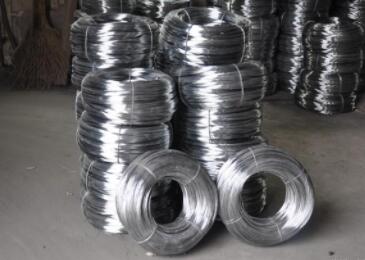The Timeless Craft of Wrought Iron Nails
Wrought iron nails, once a staple of construction and craftsmanship, evoke a sense of history and artistry. These forged nails, produced through a labor-intensive process, were integral to building structures that have withstood the test of time. In this article, we delve into the history, production, and significance of wrought iron nails, illustrating their role in both the past and their relevance in modern contexts.
Historical Context
The use of wrought iron dates back to ancient civilizations, where it was favored for its malleability and resilience. Unlike cast iron, which is brittle and prone to breaking, wrought iron can be shaped and manipulated easily when heated. This property made it ideal for creating nails, which were essential for constructing everything from houses to ships. The craftsmanship involved in making wrought iron nails was meticulous; blacksmiths would heat a bar of wrought iron and hammer it into a nail shape, often adding intricate designs for decorative purposes.
During the Middle Ages, wrought iron nails became commonplace, especially in Europe. They were used not only in construction but also in the creation of tools and furniture. With the rise of timber construction, the demand for nails surged. Artisans would create nails of various sizes for specific applications, contributing to the unique architectural styles of the era. Each nail was a testament to the skill of the blacksmith and the cultural context in which it was produced.
Production Process
The production of wrought iron nails involves several steps, each highlighting the skill and knowledge of the blacksmith. The process begins with heating wrought iron, typically in a forge, until it reaches a malleable state. The heated iron is then shaped using a hammer and anvil into the desired nail form. This method of hand forging allows for a level of quality and durability that mass-produced nails often lack.
wrought iron nails

The blacksmith's choice of techniques, such as tapering the point or creating a flat head, significantly affects the nail's functionality. After shaping, the nails are often cooled slowly to relieve stress in the metal, enhancing their strength. This meticulous production process is what sets wrought iron nails apart from modern steel nails, which are produced rapidly using automated machinery.
Significance and Modern Usage
While the modern construction industry has largely shifted to using steel nails, wrought iron nails maintain a significant place in historical restoration and traditional craftsmanship. Museums, historical societies, and restoration experts seek out wrought iron nails to preserve the authenticity of ancient structures. Buildings constructed in the 18th and 19th centuries, for instance, often incorporated these nails, and their replacement with modern alternatives can compromise the integrity and historical value of the site.
Moreover, wrought iron nails are not just relics of the past; they are also appreciated in contemporary artisan crafts. Blacksmiths and metalworkers today continue to produce wrought iron nails for bespoke projects, including furniture-making, jewelry, and decorative items. This resurgence in interest speaks to a growing appreciation for handcrafted goods and the stories that each piece carries.
Conclusion
Wrought iron nails symbolize the blend of functionality and artistry. Their history reflects the evolution of construction techniques, while their continued relevance in modern craftsmanship illustrates a timeless appreciation for quality materials and skilled labor. As we navigate an increasingly industrialized world, taking a moment to acknowledge the enduring charm of wrought iron nails reminds us of the value of tradition, craftsmanship, and the stories embedded in the materials we use. Whether as a component in historical buildings or a feature in contemporary design, wrought iron nails will always be more than just fasteners; they are icons of human ingenuity and artistry.

















